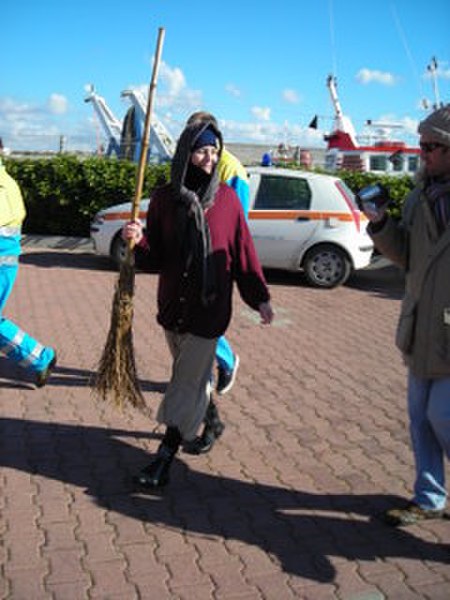In Italian folklore and folk customs, the Befana is a witch-like old woman who delivers gifts to children throughout Italy on Epiphany Eve in a similar way to Santa Claus or the Three Magi. The Befana is a widespread tradition among all Italians and thus has many names. She is a part of both popular national culture and traditional folk culture and is akin to other figures who roam about sometime during the Twelve Days and reward the good, punish the bad, and receive offerings. The Befana is a mysterious, contradictory figure of unclear origins. This character is enhanced by the fact that she is overall neglected by scholars but is the subject of much speculation by the ones who do mention her. Pre-Christian, Christian, and syncretism of the two have all been postulated as explanations of her origins. In some parts of Italy, especially the central regions, mumming takes place on Epiphany eve. Dolls are made of her and effigies are burnt and bonfires are often lit. She brings gifts to good children in some parts of Italy, typically sweets, candies or toys but coal, cinders and garlic to bad children. She is usually portrayed as a hag riding a broomstick through the air wearing a black shawl and is covered in soot because she enters the children's houses through the chimney. She is often smiling and carries a bag or hamper filled with candy, gifts, or both. She is not only loved but also feared and mocked, particularly by children.

A wooden puppet depicting the Befana
Befana of Campomarino di Maruggio, Italy
Folklore of Italy refers to the folklore and urban legends of Italy. Within the Italian territory, various peoples have followed one another over time, each of which has left its mark on current culture. Some tales also come from Christianization, especially those concerning demons, which are sometimes recognized by Christian demonology. Italian folklore also includes the genre of the fairy tale, folk music, folk dance and folk heroes.
A wooden puppet depicting the Befana
Folkloristic reconstruction of the Company of Death led by Alberto da Giussano who is preparing to carry out the charge during the battle of Legnano at the Palio di Legnano 2014
Val Camonica witch trials. Translation of the inscription: "In memory of the Federici di Sonico accused of heresy and of the victims of the burnings for witchcraft in the 16th century in Val Camonica".
The corridor of the castle of Montebello, in province of Rimini, presumed home of the ghost of Azzurina





